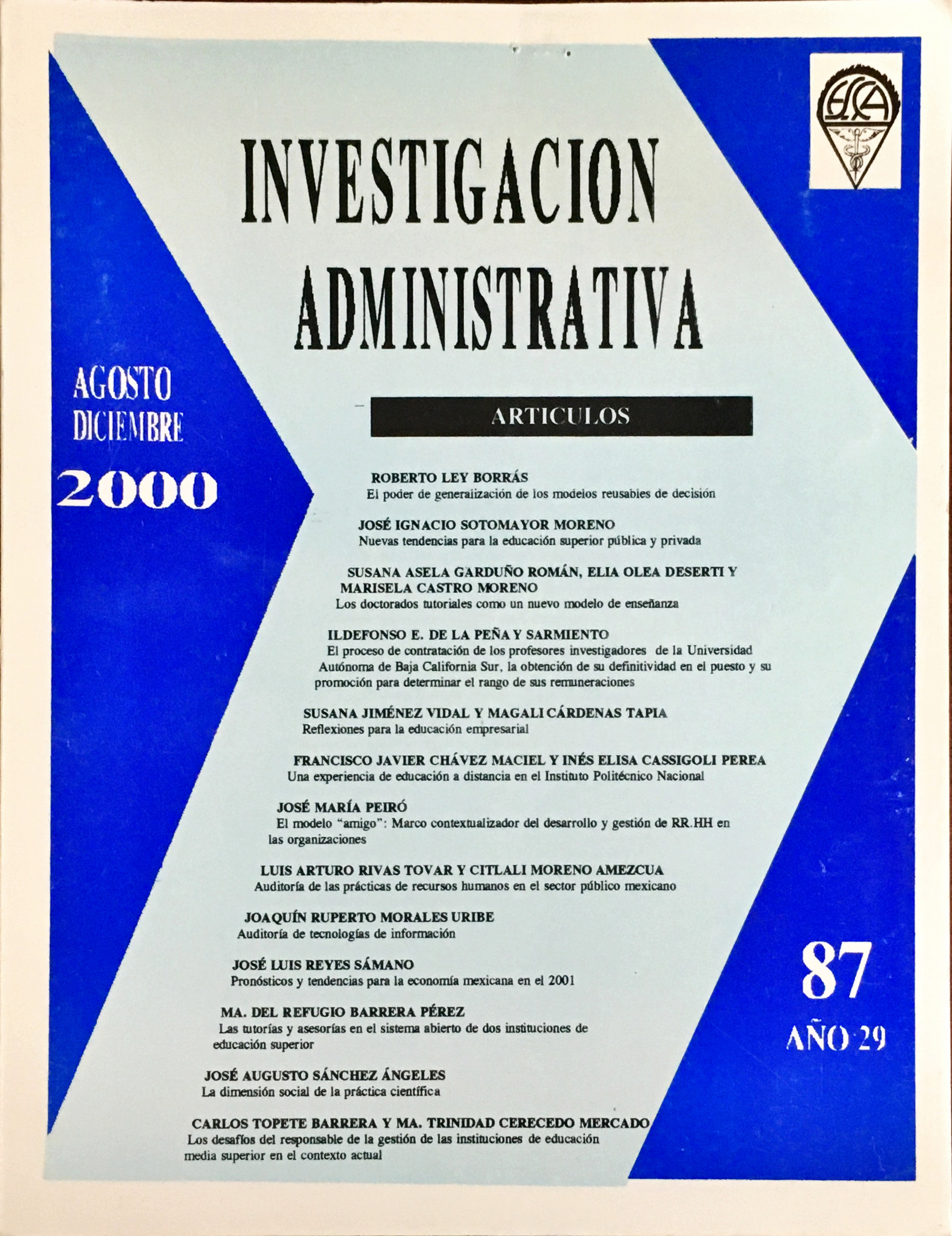THE GENERALIZATION POWER OF REUSABLE DECISION MODELS
Main Article Content
Abstract
This article presents concepts, models, teenies and recommendations for reusable decision models building. This models are new ways to tackle an important decision for industry and organisations in general. A reusable model decision permits to analyze particularity cases of a family of decision situations (group of particularity situations with common elements) doing specific changes to a general model. Using reusable models it is possible to obtain a particular decision model in lower time and with few effort.
Each reusable model is formed by a master model which includes all the decisions, alternatives, random events, results and preferences. The ordinary situations of decision family are contained in a great model of decision which permits us to determinate what elements of this master self-active model for each particular situation are needed.
Article Details

This work is licensed under a Creative Commons Attribution-NonCommercial 4.0 International License.
References
Applied Decision Analysis (1996), DPL: Decision Programming Language., Menlo Park, Cal.
Clemen, R. (1996), Making Hard Decisions: An Introduction to Decision Analysis, Duxbury Press.
Hammond, J. S.; Keeney R. L.y Howard R. (1999) Smart Choices: A Practical Guide to Making Better Decisions, Harvard Business School Publishing, EUA.
Howard, R. A. (1988), “Decision Analysis: Practice and Promise”, Management Science, Vol. 34 No. 6.
Keeney, R. L. (1992) Value Focused Thinking, Harvard University Press, Cambridge, Mass.
Kirkwood, C. W. (1997) Strategic Decision Making: Multobjective Decision Analysis with Spreadsheets. Duxbury Press, Belmont, California.
Ley B., R. (2001), Análisis de Incertidumbre y Riesgo para la Toma de Decisiones, libro a ser publicado.
Ley B., R. (2000), Guía para el Desarrollo de Modelos Reusables de Decisión, Instituto Tecnológico de Orizaba, Orizaba, Ver.
Ley B., R. (1998a), “Principios para el Desarrollo de Modelos Reusables de Decisión”, Revista UPIICSA, Nueva Época. Año 6, Núm. 16, enero-abril 1998.
Ley B., R. (1998b), “Using Decision Frames in NAFTA Intranational Conflicts”, Policy Studies Review, vol. 15 Num. 2/3, pp. 101-115.
Ley B., R. (1996), “Representación del Conocimiento en Análisis de Decisiones”, Revista UPIICSA, Nueva Época. Año 4, Núm. 9, enero-abril.
Matheson, D. y Jim M. (1997) The Smart Organization: Creating Value through Strategic R&D, Harvard Business School Publishing, EUA.
McNamee, P. y John C. (1990), Decision Analysis with Supertree, 2a. edición, The Scientific Press, San Francisco.
Ramírez, G. (1998), Modelo Especializado de Decisiones para Selección de Medios de Publicidad, Coloquio 1998 de Aplicación e Investigación en Ingeniería Industrial.
Ramírez, G. (1999), Desarrollo de Modelos Especializados de Decisión para Seleccionar Medios de Publicidad, Tesis de la Maestría en Ciencias en Ingeniería Industrial del Instituto Tecnológico de Orizaba.
Romero G, Y. (1999), Desarrollo de un Modelo Especializado de Decisión para Productores de Chayote, Tesis de la Maestría en Ciencias en Ingeniería Industrial del Instituto Tecnológico de Orizaba.
Romero G, Y. y R. Ley B, R. (1998), Modelos de Decisión para Productores de Chayote de la Región de Orizaba, Veracruz, Coloquio 1998 de Aplicación e Investigación en Ingeniería Industrial.

